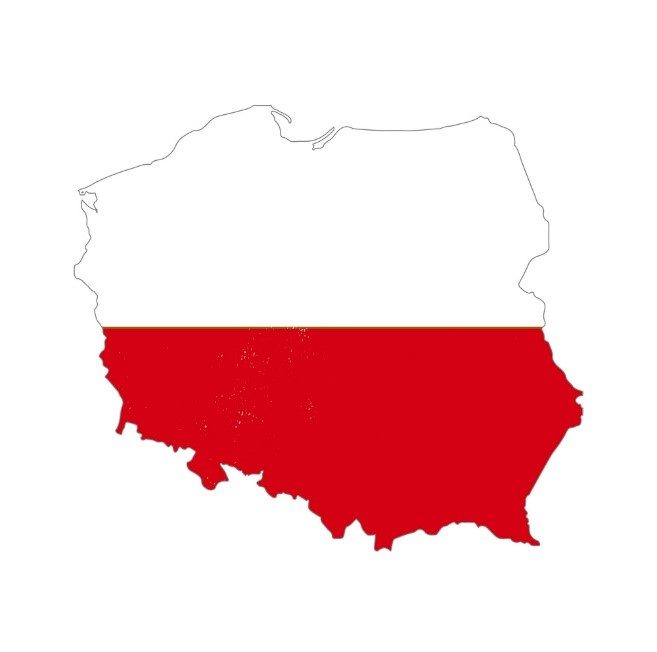Portugal
The Portuguese have a long history in the United States. João Rodrigues Cabrillo arrived in San Diego Bay on September 9, 1542, and was the first European to explore the land that is now California.1 In 1634, the first documented Portuguese to live in colonial America was Mathias de Sousa, a Sephardic Jew. Some of the earliest European explorers to reach continental North America were Portuguese.
During the colonial period, there was a small Portuguese emigration to the present-day United States, especially to Martha’s Vineyard and Nantucket. In the late 19th century, many Portuguese, mainly Azoreans and Madeirans, migrated to the eastern United States, establishing communities in New England.2
In the 1920s, Portuguese began to settle in the Ironbound section of Newark, New Jersey, many coming from New Bedford and Pawtucket. Following the establishment of this community, numerous Portuguese migrants followed them from Europe.
Although 19,195 Portuguese immigrated to the United States in 1921 alone, the entire decade of 1921-1930 saw an immigration of only 29,994. This dramatic drop was due to the restrictive immigration laws of the 1920s. The Immigration Act of 1921 set the quota for Portuguese immigrants at 2,520. The Immigration Act of 1924 reduced the quota to 503, and later in 1929, to 440.3
The liberalized immigration law of 1965 was effective in increasing Portuguese immigration. In the 1960s, over 73,000 legal Portuguese immigrants arrived in the United States, more than five times the 14,500 that arrived in the previous decade. By 1970 there were 318,458 first- and second-generation Portuguese residing in the United States.4
In 1926, the diocese of Newark created Saint Joseph’s Spanish-Portuguese parish in the Ironbound section of Newark. By World War II, this new Portuguese community had an estimated population of 6,000, including the immigrants and their American-born children.5
In 1947, the archdiocese founded Immaculate Heart of Mary Spanish-Portuguese Parish in Elizabeth. In 1954, the Religious Teachers Filippini came to the parish where they provided religious education as well as a day care center.
In 1956, a separate Portuguese parish, Our Lady of Fatima, was established. Saint Joseph’s then became a Spanish parish, renamed Immaculate Heart of Mary in 1966. In the 1973, the archdiocese created another separate Portuguese parish in Elizabeth, also dedicated to Our Lady of Fatima. From this time forward, the story of the Spanish-speaking and Portuguese-speaking immigrations diverges.
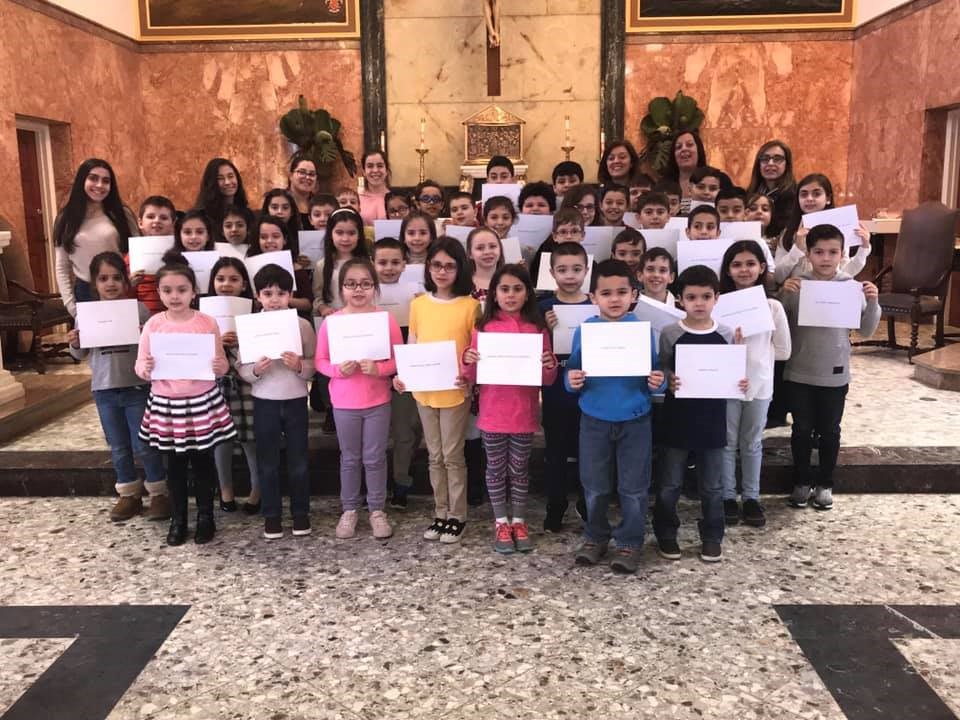
The early 20th century Portuguese immigration centered in the Ironbound section of Newark. This migration continued throughout the remainder of the 20th century and into the 21st. The Ironbound section became a Portuguese enclave characterized by Portuguese businesses, social clubs, and restaurants. While still centered in Newark and Elizabeth, the Portuguese population also moved into Hudson County and spread throughout the state of New Jersey and elsewhere.
In 1995, there were about 30,000 Portuguese Americans living in Newark. The Portuguese population in Newark declined in the latter 20th century as large numbers of Portuguese began to move to neighboring towns and into the suburbs. Simultaneously, the Brazilian population increased. By 2000, Census data showed 15,801 residents of Portuguese ancestry in Newark, with 5,805 of Brazilian ancestry.6 I discuss the Brazilians with the Portuguese because, although they are of very different cultures, they share the Portuguese language and, more often than not, settle in nearby neighborhoods and attend the same parish churches.
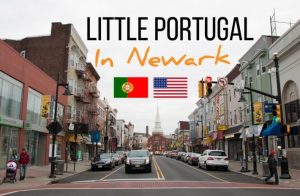 Newark was changing and the change in Newark demonstrates the fluidity of the movement of immigrants into, throughout, and out of the archdiocese of Newark. As of the 2000 Census, 49.2 percent of the city’s 80,622 residents who identified themselves as Hispanic or Latino were from Puerto Rico, while 9.4 percent were from Ecuador and 7.8 percent from the Dominican Republic. 2000 census data showed that Newark had 15,801 residents of Portuguese ancestry (5.8 percent of the population), while an additional 5,805 (2.1 percent of the total) were of Brazilian ancestry.7
Newark was changing and the change in Newark demonstrates the fluidity of the movement of immigrants into, throughout, and out of the archdiocese of Newark. As of the 2000 Census, 49.2 percent of the city’s 80,622 residents who identified themselves as Hispanic or Latino were from Puerto Rico, while 9.4 percent were from Ecuador and 7.8 percent from the Dominican Republic. 2000 census data showed that Newark had 15,801 residents of Portuguese ancestry (5.8 percent of the population), while an additional 5,805 (2.1 percent of the total) were of Brazilian ancestry.7
The following table shows the transition of the Portuguese-speaking population from the city of Newark to nearby cities and suburbs between 2000 and 2010 according to the United States Census Bureau and the bureau’s estimate for 2018.8
It also shows the growth and stability of the Brazilian population curing the same period.
| Newark 2000 | Newark 2010 | Newark 20139 | Newark 2018 | |
|---|---|---|---|---|
| Portuguese | 15,801 | 14,047 | 13,068 | 10,550 |
| Brazilian | 5,805 | 9,125 | 10,091 | 9,410 |
For example, the top country of origin for immigrants in the city of Newark is not Portugal (7,610 immigrants) or Brazil (8,610), but Ecuador (with 13,762). Many Portuguese have moved from Newark to Elizabeth, Kearny and South River, and they are the most represented country for immigrants in Hillside, Clark, and Mountainside. Other towns with a significant Portuguese population are East Newark, Harrison, Kenilworth, Linden, Livingston, Lodi, New Providence, North Arlington, Short Hills, and Union.10
Only three states, California, Massachusetts, and Rhode Island count more citizens of Portuguese background than New Jersey. 11
Several priests have come from Portugal to minister to this community. Soon, however, the community produced vocations from their number. In addition, the archdiocese sponsored several priests to study Portuguese in Portugal and in a language school in New York. The Vocationist Fathers also provided priests from Brazil.
Today, in addition to the “officially” Portuguese parishes, several parishes have large Portuguese communities and offer Mass in Portuguese. Throughout the archdiocese, Mass is celebrated in Portuguese in 14 parishes.
A majority of Portuguese-speaking persons in New Jersey live in the archdiocese of Newark, the largest numbers in Essex and Union counties.
Portuguese in the Archdiocese of Newark
| NJ | Bergen | Essex | Hudson | Union | RCAN | |
|---|---|---|---|---|---|---|
| Portuguese Background 2010 | 80,684 | 4,674 | 17,050 | 6,484 | 17,630 | 45,838 |
| Portuguese Birth 2017 estimate | 31,513 | 1,861 | 7,887 | 3,298 | 9,267 | 22,313 |
According to Pew studies, approximately 77 percent of Portuguese are Catholic. There is no specific estimate for Portuguese Americans. 12
Brazil
The Lusophone community increased with the arrival of Brazilian immigrants, now possible through the reform of the immigration laws. Although their culture is distinct from the Portuguese, they share the same language and many aspects of religious devotion and culture. A great number of newly arrived Brazilians moved to the Ironbound as well, attracted by the Lusophone culture. Cities within the archdiocese with a significant Brazilian population are Newark, Kearny, Harrison, Hillside, Cliffside Park, and Fairview.13
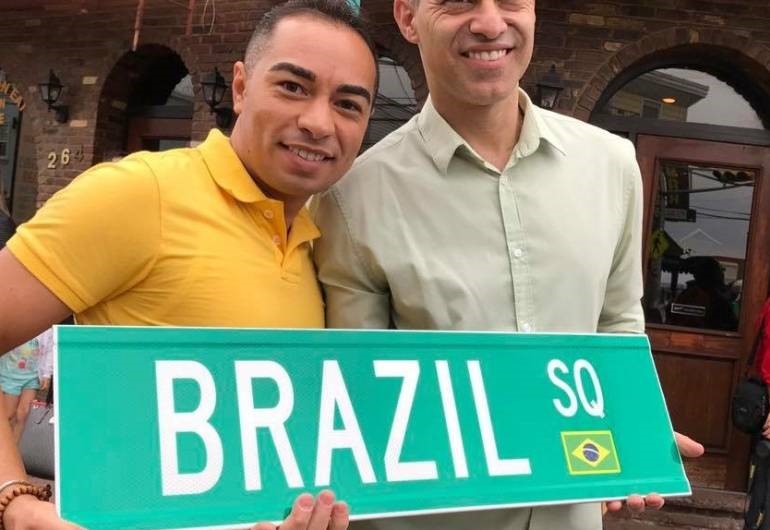
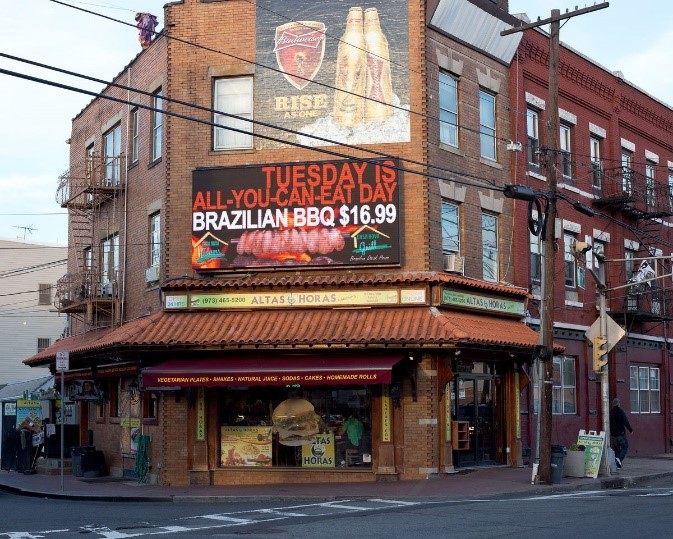
People from what is now Brazil are recorded among the Dutch West India Company settlers that arrived in New Netherland in what is now New York City in the 17th century. Before 1940, Brazilians were included among all South Americans in census reports. The 1960 United States Census report recorded 27,885 Americans of Brazilian ancestry.
 The 1990 U.S. Census Bureau recorded that there were about 60,000 Brazilians living in the United States. However, other sources indicate that there were nearly 100,000 Brazilians living in the New York City metropolitan area (including Northern New Jersey) alone, in addition to sizable Brazilian communities in Atlanta, Boston, Washington, D.C., Los Angeles, Miami, Houston, and Phoenix. The differences among the various sources is great. The following are results of the 2010 United States Census.
The 1990 U.S. Census Bureau recorded that there were about 60,000 Brazilians living in the United States. However, other sources indicate that there were nearly 100,000 Brazilians living in the New York City metropolitan area (including Northern New Jersey) alone, in addition to sizable Brazilian communities in Atlanta, Boston, Washington, D.C., Los Angeles, Miami, Houston, and Phoenix. The differences among the various sources is great. The following are results of the 2010 United States Census.
Brazilians in the Archdiocese of Newark
| NJ | Bergen | Essex | Hudson | Union | RCAN | |
|---|---|---|---|---|---|---|
| Brazilian Background 2010 Census |
35,248 | 2,221 | 10,609 | 4,059 | 4,779 | 21,668 |
| Brazilian Birth 2017 Estimate |
26,685 | 2,002 | 8,735 | 3,402 | 3,936 | 18,075 |
Six out of ten Brazilians in New Jersey live within the archdiocese of Newark, the largest number in Essex County.
According to Pew studies, approximately 60 percent of Brazilians identify as Catholic.14
Italy
The great period of Italian migration to the United States was 1870 to 1920. Today, more than 17 million Americans claim Italian heritage. The restrictive immigration laws of the 1920s severely limited Italian immigration but did not cut it off entirely. While Italian immigration halted during World War II, it began again after the end of that war in 1945. An estimated 600,000 Italians arrived in the decades following World War II. The numbers peaked in 1956 when more than 40,000 Italians migrated to the United States.15
Most migrants gravitated to existing Italian-American communities and participated in the parochial life of the numerous Italian national parishes. There, the priests spoke Italian and there were many familiar manifestations of Italian culture such as religious processions and feasts.
At the same time, many of these Italian parishes were rapidly changing. The post-World War Ii move to the suburbs drastically reduced the number of parishioners. The newcomers provided a new infusion of membership in many of these parishes.
Unfortunately, the misguided “urban renewal” of the middle 20th century severely devastated some of the traditional Italian urban parishes. For example, Saint Lucy’s Church, founded in 1891, was the center of a “Little Italy” in Newark, one of the largest in the United States with a population of about 30,000 in an area of less than one square mile. “Urban renewal” during the 1950s destroyed the neighborhood, the Italian-American residents moved out, and most of its businesses never recovered. The construction of Interstate 280 cut the neighborhood off from the rest of the city. Under inspired leadership, the parish survived.16
The new Italian migrants of the late 20th and early 21st century settled in Newark and Jersey City but also in the suburbs such as Garfield, Lodi, and Montclair.

The number of Italian-born citizens of New Jersey, almost 56,000, is a significant cohort of recent immigration to the state. Almost 24,000, more than 40 percent live within the archdiocese of Newark. Almost half of those within the archdiocese live in Bergen County. Pew Research estimates that approximately 81 percent of Italians are Catholic. In the archdiocese of Newark, Mass is celebrated in Italian in 13 parishes.
| NJ | Bergen | Essex | Hudson | Union | RCAN | |
|---|---|---|---|---|---|---|
| Italian Heritage 2010 | 1,521,527 | 177,968 | 81,989 | 51,079 | 63,922 | 374,958 |
| Italian Born 2010 | 55,996 | 10,172 | 4,687 | 4,373 | 4,621 | 23,853 |
Poland
Polish immigration was increasing rapidly in the early 20th century until the restrictive laws of the 1920s reduced it substantially. Following the end of World War II in 1945, a new wave of immigrants came from Poland. Many came to escape Soviet-imposed Communist rule in Poland.
In the 1980s, about 34,000 refugees arrived fleeing Communism in Poland, along with 29,000 regular immigrants. Most of the newcomers were well-educated professionals and political activists. Following the end of the Communist regime in Poland in 1989, the numbers increased. The most popular destination for Polish immigrants following 1989 was Chicago, followed by New York City.17
In the 2011 United States Census Bureau’s Population Estimates, there were between 9,365,239 and 9,530,571 Americans of Polish descent, with over 500,000 foreign-born. Therefore, it is safe to estimate that since World War II about one-half-million new Polish migrants came to the United States. Many of these migrants settled in areas where there was already a Polish-American population and a Polish language parish. Some of these parishes had stable Polish-American parishioners and others renewed their Polish heritage with the presence of the newcomers.

While there were numerous Polish-speaking priests in the archdiocese of Newark, priests and seminarians also came from Poland to minister to this new population. This new Polish migration rapidly integrated into the Polish language parishes as well as into many other parishes in the archdiocese of Newark.
Cities in the archdiocese with significant numbers of first-generation Poles include Bayonne in Hudson County, Linden in Union County, and Wallington and Garfield in Bergen County.18 To these we can add Elmwood Park, East Rutherford, and North Arlington.19 The 2010 United States Census reveals the following statistics for New Jersey. Almost half of the new immigrants live in the archdiocese of Newark, with the majority in Bergen County.
| 2010 NJ | 2010 Bergen | 2010 Essex | 2010 Hudson | 2010 Union | 2010 RCAN | |
|---|---|---|---|---|---|---|
| Polish Heritage | 563,484 | 43,434 | 23,292 | 23,921 | 31,186 | 120,833 |
| Polish Born | 53,435 | 12,906 | 1,912 | 4,175 | 5,370 | 24,363 |
According to the Pew studies, 92 percent of Poles are Roman Catholic. Mass is celebrated in Polish in 16 parishes in the archdiocese of Newark.
Croatia
Croatia, for centuries under the rule of other nations, Yugoslavia, Austria, and Venice among them, achieved independence in 1991. Long before, people of Croatian nationality had migrated to the United States but were counted with Yugoslav or Austrian immigrants.
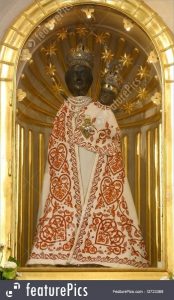
Today, there are 2,637 Croatian-born residents of New Jersey. The majority live in southern Bergen county and northern Hudson County. There are 1,321 Croatian-born residents of Bergen County, an additional 2,623 who claim Croatian ancestry for a total of 3,981of Croatian background. In adjoining Hudson County, there are 704 persons of Croatian ancestry, 531 born in the United States, and 173 born in Croatia.
There are various Croatian social services located in Fairview, New Jersey, some of them associated with Saint John the Baptist Church. Mass is celebrated in Croatian in Saint John Nepomucene Church, part of Holy Redeemer Parish, in Guttenberg, New Jersey. Holy Redeemer Parish also provides various other services for the Croatian community such as a Croatian Rosary Society and Croatian retreats.
The population of Croatia is 86 percent Catholic.20
Europe
Immigration has continued from other nations that have sent migrants to the Archdiocese of Newark form the earliest days. The following table shows the United States Census Bureau estimates for 2017 for New Jersey residents born in the designated nations.
| NJ | Bergen | Essex | Hudson | Union | RCAN | |
|---|---|---|---|---|---|---|
| Ireland | 7,586 | 1,754 | 569 | 673 | 526 | 3,522 |
| Italy | 41,111 | 8,060 | 3,716 | 3,139 | 3,095 | 18,010 |
| Germany | 20,641 | 2,897 | 1,014 | 1,042 | 1,101 | 6,054 |
| Poland | 47,279 | 12,192 | 1,656 | 3,608 | 5,147 | 22,603 |
| Spain | 9,536 | 1,585 | 1,466 | 2,124 | 1,000 | 6,175 |
Footnotes
- https://www.everyculture.com/multi/Pa-Sp/Portuguese-Americans.html#ixzz5dG4ygKwP
- https://en.wikipedia.org/wiki/Portuguese_Americans
- https://www.loc.gov/rr/hispanic/portam/chron5.html
- https://www.loc.gov/rr/hispanic/portam/chron5.html
- Twentieth Century Arrivals from Portugal Settle in Newark, New Jersey. https://www.loc.gov/rr/hispanic/portam/arrivals.html
- https://voicesofny.org/2015/07/how-samba-and-saudade-found-a-place-in-newark/
- Hispanic or Latino by Type: 2000 from the Census 2000 Summary File.
- https://www.neighborhoodscout.com/nj/newark/demographics
- https://voicesofny.org/2015/07/how-samba-and-saudade-found-a-place-in-newark/
- http://nj1015.com/all-the-nations-where-nj-immigrants-come-from-and-where-in-nj-they-now-live/
- http://www.city-data.com/top2/h55.html and Google
- http://www.pewresearch.org/fact-tank/2018/12/19/5-facts-about-catholics-in-europe/
- https://en.wikipedia.org/wiki/Brazilian_Americans
- http://www.pewforum.org/2014/11/13/religion-in-latin-america/
- https://www.mtholyoke.edu/~molna22a/classweb/politics/Italianhistory.html and https://en.wikipedia.org/wiki/Italian_Americans
- https://en.wikipedia.org/wiki/Italian_Americans
- https://en.m.wikipedia.org/wiki/History_of_the_Poles_in_the_United_States
- https://en.wikipedia.org/wiki/Polish_Americans#cite_note-American_FactFinder-16
- http://www.city-data.com/top2/h61.html
- https://en.wikipedia.org/wiki/Catholic_Church_in_Croatia



